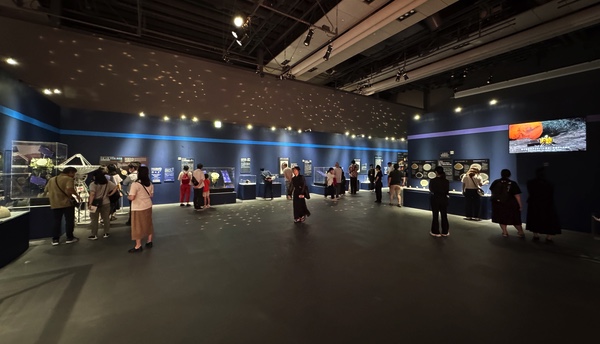A museum exhibition on Japanese spaceflightby Jeff Foust
|
 A full-scale model of the “Lunar Cruiser” pressurized rover being developed by JAXA and Toyota. (credit: J. Foust) |
The exhibition is comprehensive, with sections devoted to launch vehicles, satellites, exploration, space science, and more. It relies heavy on models, including a full-size model of a payload fairing half for the H3 rocket. Elsewhere is a full-size model of Lunar Cruiser, the pressurized lunar rover that the Japanese space agency JAXA is developing in collaboration with Toyota for use on later Artemis missions. While it is a low-fidelity model—there is nothing inside to look at, for example—it does give a sense of scale of the vehicle, and allows one to better understand why its delivery to the lunar surface will require a cargo version of the SpaceX Starship lunar lander.
There is some flown hardware—or flight-qualified hardware—on display. The section on launch vehicles has recovered fragments of H-2A payload fairings. Also on display is a collection of parts from launch vehicles, ranging from insulation to part of an interstage section, with an invitation for museumgoers to touch them, allowing people to appreciate how such items are strong yet lightweight (“Try lifting it up!” says a sign in English next to one item, a truss rod.)
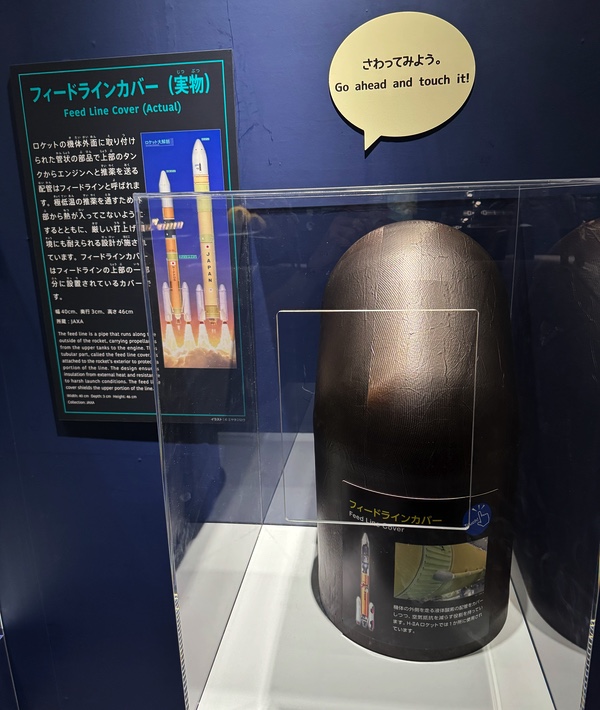 Visitors are encouraged to feel some rocket components. (credit: J. Foust) |
The most prominent piece of flown hardware on display, though, is not Japanese. It’s the descent capsule from Soyuz MS-20, which flew Japanese billionaire Yusaku Maezawa and his assistant, Yozo Hizano, to the International Space Station in December 2021 along with Russian cosmonaut Alexander Misurkin. The Soyuz spent a week and a half at the ISS on a dedicated private astronaut flight brokered by Space Adventures.
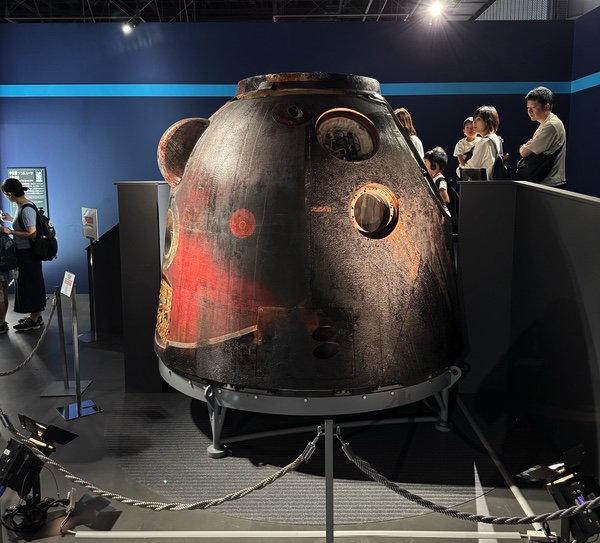 The descent module of the Soyuz MS-20 spacecraft that flew Japanese billionaire Yusaku Maezawa and his assistant, Yozo Hizano, to the ISS in 2021. (credit: J. Foust) |
The display of the Soyuz in the museum allows visitors to get up close to the capsule, including peering into the hatch to see the interior. Above it is the parachute used by the capsule on that mission. It is a good opportunity to see a Soyuz up close, but also a reminder of what is missing so far from Japanese spaceflight: a crewed spacecraft.
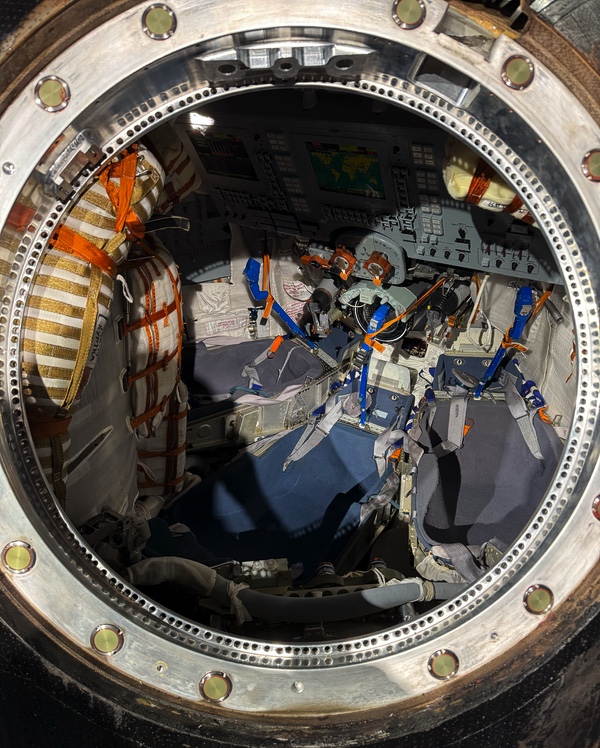 Looking inside the Soyuz capsule. (credit: J. Foust) |
Other sections examine Japan’s contributions to space science, with models of spacecraft as well as grains of asteroid samples returned by the Hayabusa and Hayabusa2 missions, one area where Japan has been a leader. There is some discussion of commercial space as well, with models of synthetic aperture radar imaging satellites being built by Japanese company iQPS and Synspective, as well as models of Interstellar Technologies’ Zero rocket in development and Space One’s Kairos, which failed in its first two launches.
Like many other museum exhibitions, this one concludes with a gift shop. For space exhibits, that usually means some NASA-branded t-shirts and other apparel, and that was true in this case. But there were far more JAXA-branded items, from shirts and hats to models and toys. (Contrast that with the gift shops at the Paris Air Show in June, where there were more items with either the NASA worm or meatball logos than those with ESA logos, even though ESA anchored the show’s space zone and NASA was all but absent.)
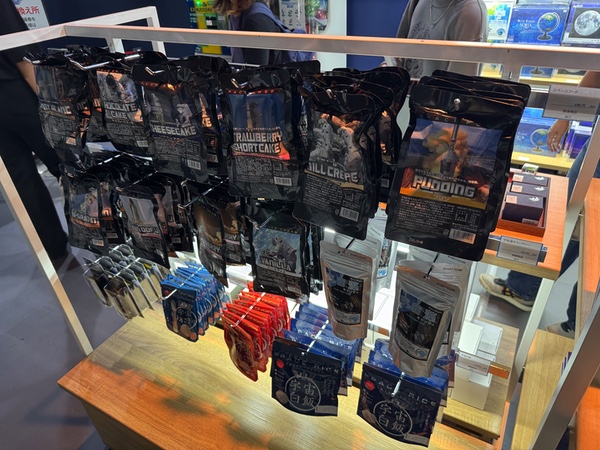 Why settle for astronaut ice cream when the gift shop offers space rice and “cosmic algal candy”? (credit: J. Foust) |
One such staple of those gift shops is “astronaut ice cream,” which remains popular even though astronauts don’t eat it in space and it tastes terrible. This exhibition’s gift shop, though, offered a far wider range of space-themed food items, from “space rice” to “cosmic algal candy”. There were even “Dream Chaser cookies” that included the design of the spaceplane and the Sierra Space logo printed on them; the company announced several years ago plans for Dream Chaser to land at Oita Airport in Japan. (This reviewer can’t vouch for whether any of them taste better than astronaut ice cream, although that is a low bar.)
 Sierra Space’s Dream Chaser isn’t flying yet, but you can get it on a cookie. (credit: J. Foust) |
The exhibition is open through September 28 and requires a special ticket separate from the main museum. For adults, admission in 2,200 yen (about US$15), with various discounts for children, groups, and advance purchases. There was, notably, only a short line to buy tickets on the day the exhibition opened on a Saturday in mid-July.
If museums are indeed a way to see how societies view spaceflight, “Deep Space - To the Moon and Beyond” illustrates the breadth of Japanese space activity, from launch vehicles and spacecraft to science and exploration. It also, perhaps unintentionally, shows what it still missing, and where Japan must partner with other countries or companies to achieve its ambitions in space.
Note: we are now moderating comments. There will be a delay in posting comments and no guarantee that all submitted comments will be posted.
